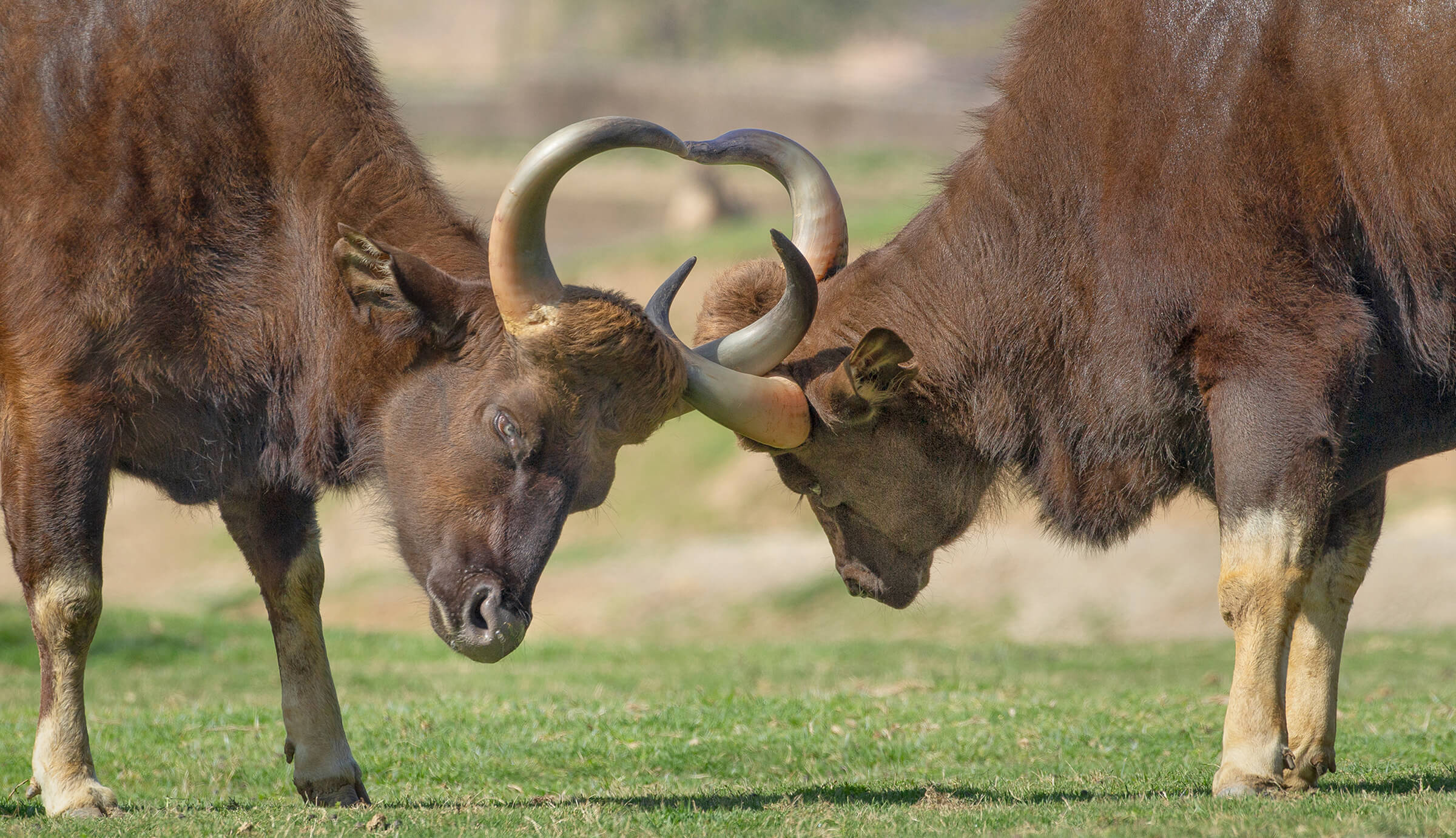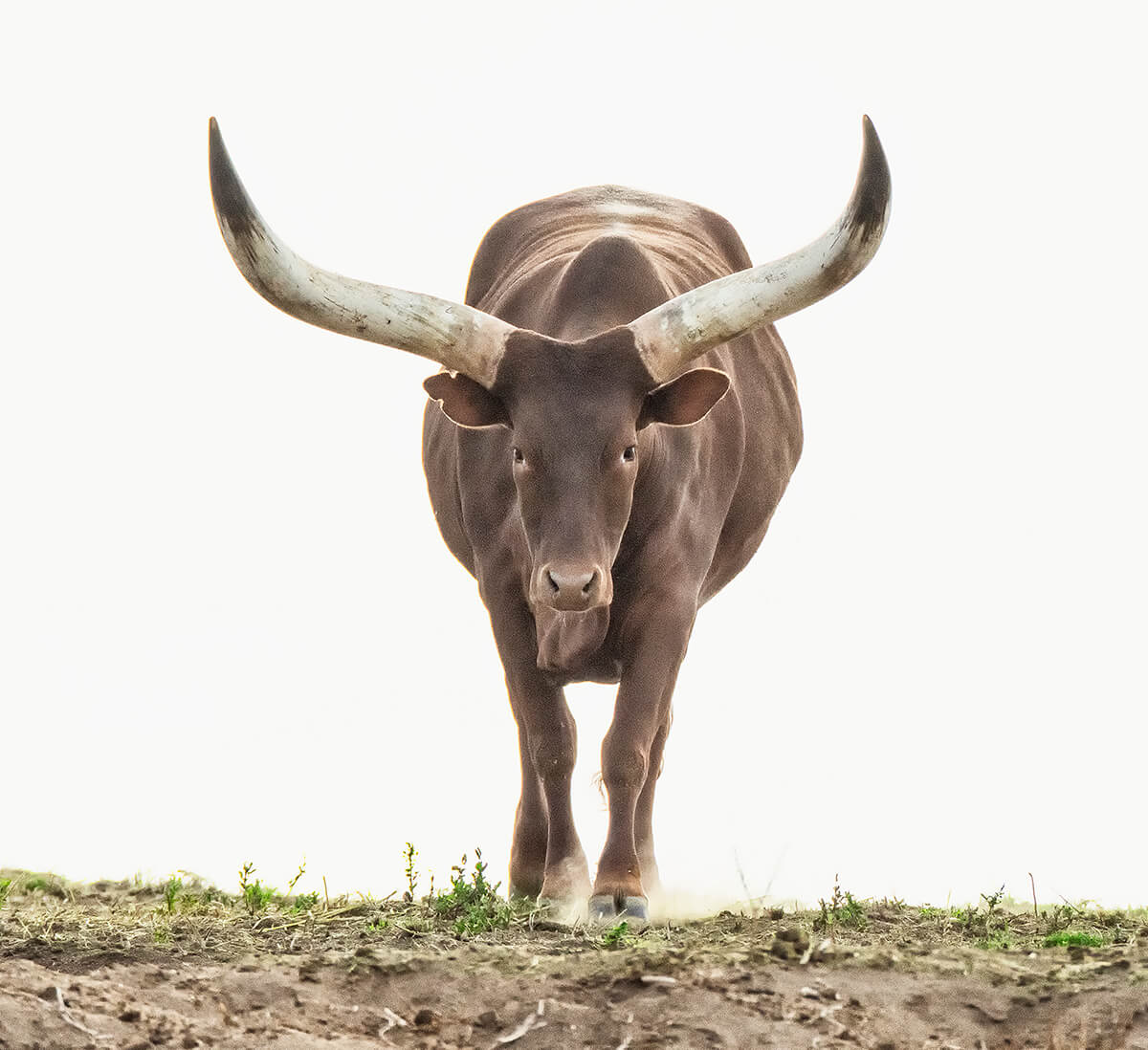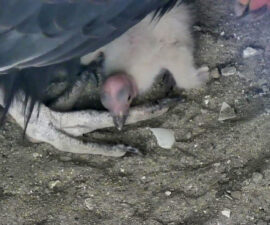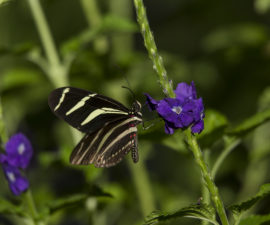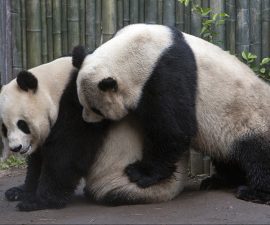As the largest bovid left on the planet, where do gaur go? Wherever they want to! Old jokes aside, the gaur Bos gaurus and its Bovidae brethren are a fascinating group of vegetation-loving mammals, and the biggest of them are worth, well, ruminating over.
BY Peggy Scott
Photography by Ken Bohn
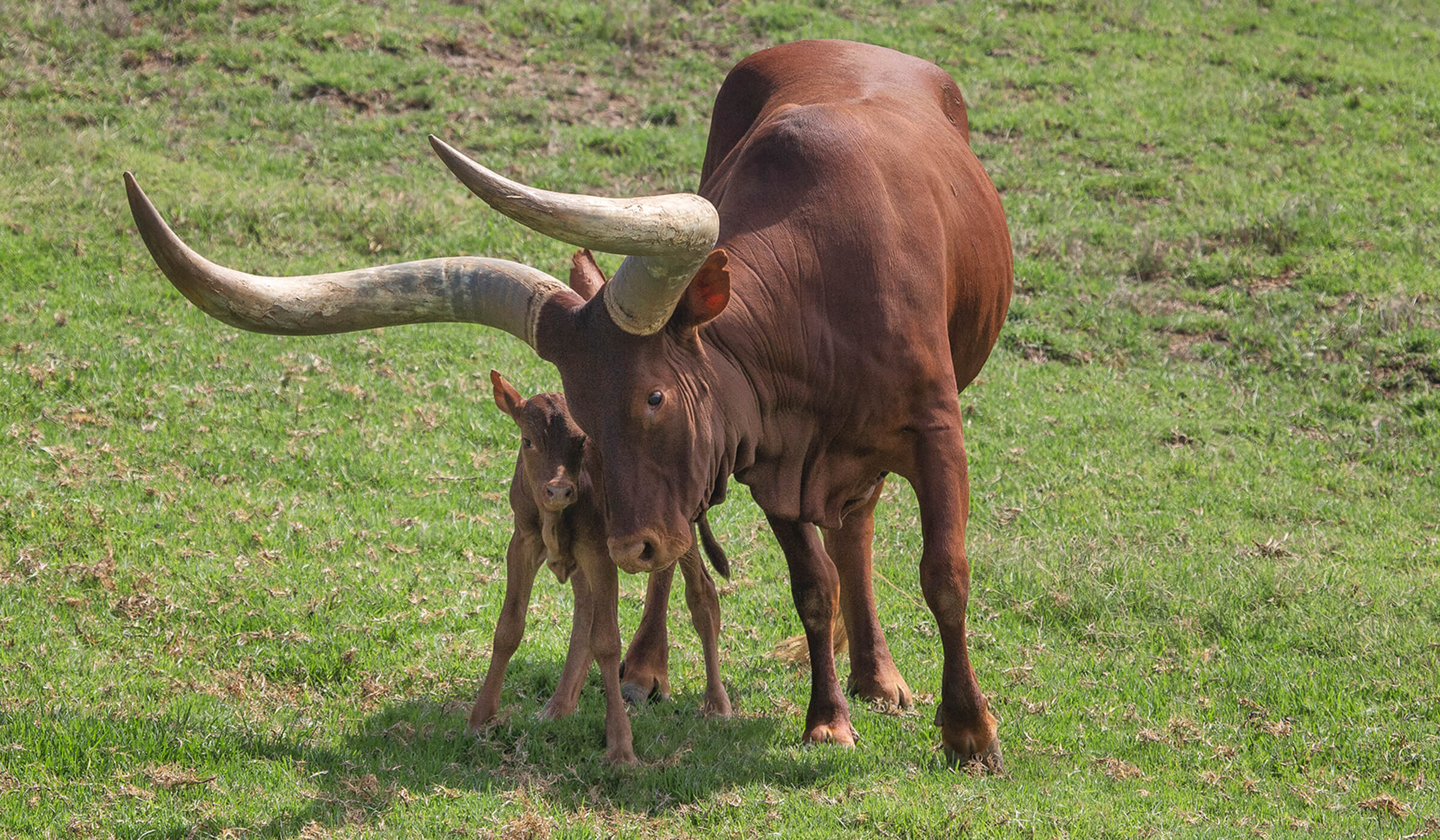
The Secret’s Up Top, Afoot, and in the Stomach
The Family Bovidae, or Bovids, are a diverse group of ungulates which includes antelope, cattle, goats, sheep, and their relatives. Their horns help set them apart, as they are made of keratin over bone, and are never shed (unlike antlers). Most bovid horns continue to grow throughout life and are unbranched. And while bovids may share many characteristics, when you get to the bottom of it, their feet also top the list. Members of the Artiodactyla order (even-toed ungulates), bovids walk on the third and fourth toes of each foot, which are covered by protective hooves.
Standing on their toes keeps them on their toes—it lengthens their legs and gives them speed when running or jumping; a plus when fleeing from predators. When it’s mealtime, bovids, being ruminants, go with their gut—all four of them. Actually, they have one stomach with four chambers, which enables them to digest foods with low-nutritional value, such as grasses and leaves. Ruminants rely on their unique tummies and bacteria to break down those plants in order to survive. Given their heft, it’s amazing the bigger bovids can exist on nature’s salad, but this is a hardy lot. Here’s a look at some of the largest, which are found in the Tribe Bovini, or Cattle, which includes domestic cattle, the African and Asian buffalo, bison, banteng and gaur.
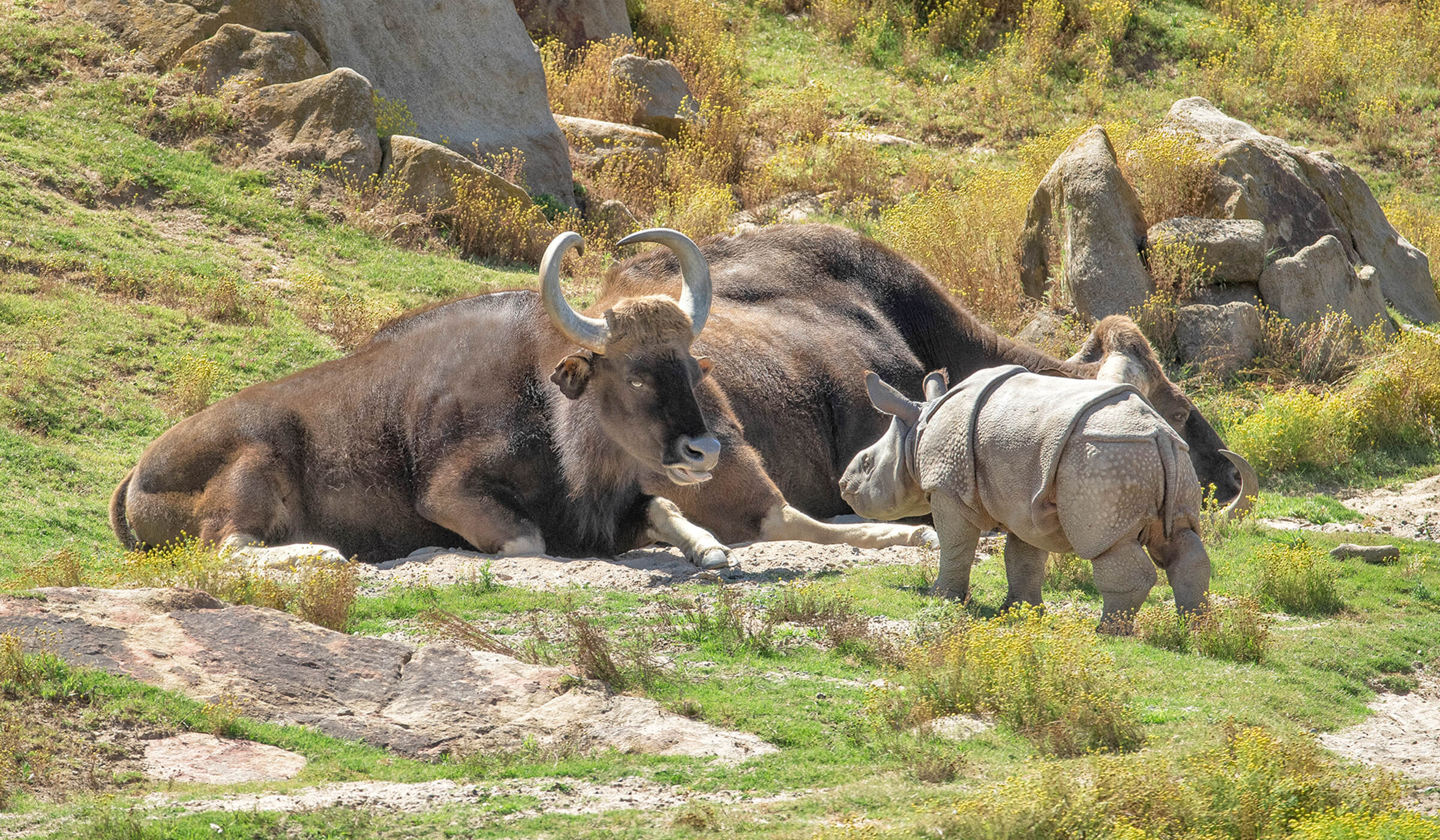
Gaur
Native to the woodlands of India and Mainland Southeast Asia, gaur measure up to 7 feet at the shoulder and weigh between 1,500 and 2,200 pounds. They live in herds led by an adult male, and, apparently, size matters—there isn’t much tussling among males during breeding season, since the biggest male is dominant. Aside from a telltale pronounced shoulder hump, males have a resonant mating call that can be heard for nearly a mile, and those lower in the hierarchy may occasionally tempt females away from the main herd. As formidable as they seem, gaur are still rated as Vulnerable by the International Union for Conservation of Nature (IUCN).
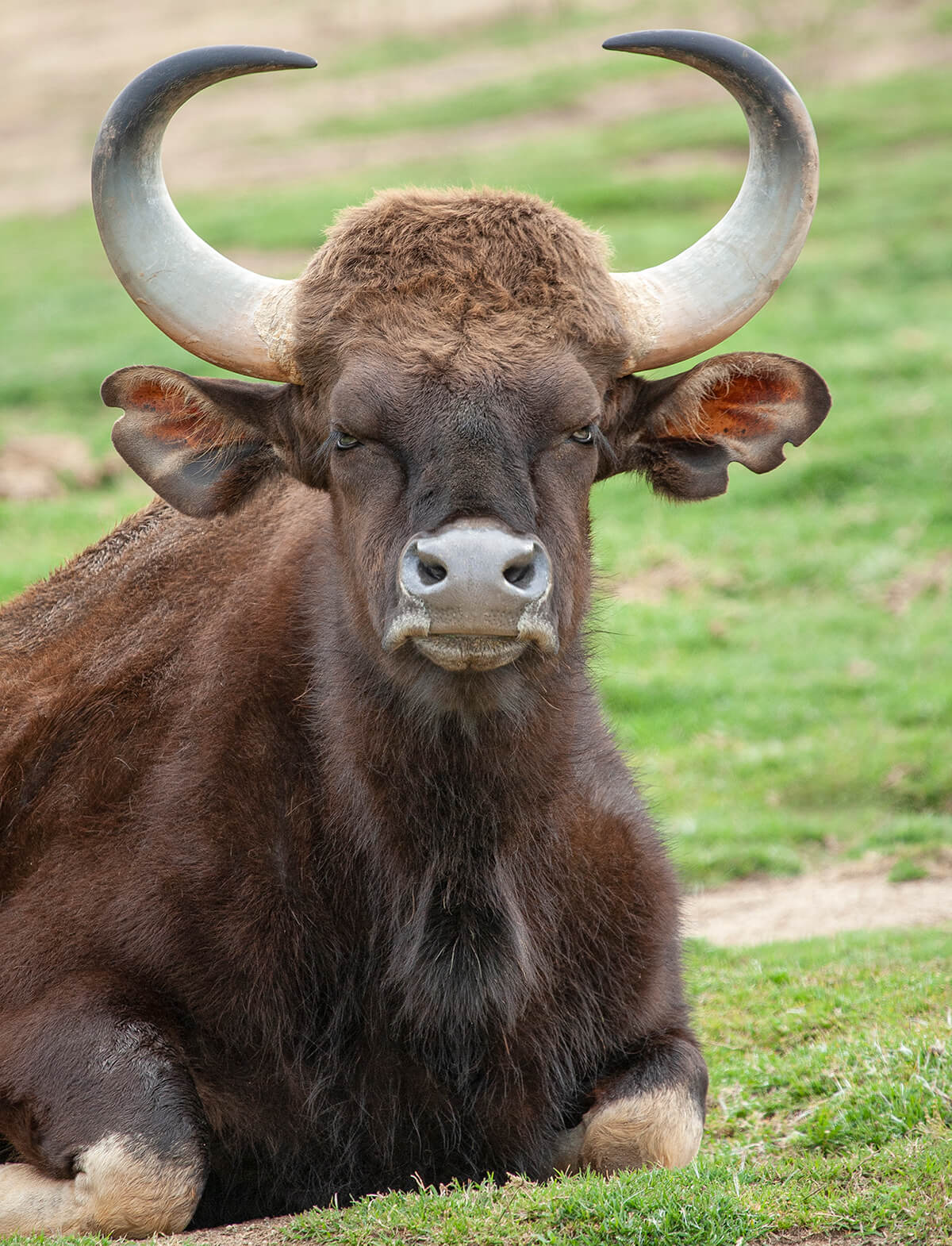
THE GAUR “GLOWER”
The steely gaze of a gaur keeps other wildlife at bay—unless you’re a curious and bold rhino calf (pictured above).
Gaur congregate near water holes in the dry season, and then disperse more widely when the monsoon rains arrive. Even though they’re huge, gaur can dash and crash into the jungle in a hurry if threatened—and woe to anything that gets in the way. Moral of the story: no surprise parties for gaur. Wildlife care specialists at the Safari Park use a rule of thumb around gaur that is suitable for all species: “respect boundaries.” The residents of the savanna habitats have that all worked out among themselves as well.
Cape Buffalo
A subspecies of the African buffalo Syncerus caffer, Cape buffalo can be found on the African plains. While they top out at around 59 inches tall, Cape buffalo are still quite imposing, weighing up to 1,900 pounds, with bulls 200 pounds heavier than cows. They live in tightly knit herds of 50 to 500 members and embody the saying “all for one, and one for all.” Cape buffalo have a reputation for being extremely ill-tempered and charging at hunters. Given that hunters tend to shoot at them, that seems fair. But no matter why, having a defensive, one-ton creature with a three-foot horn span hotfooting it toward you can’t be pleasant. According to the IUCN, Cape buffalo are Near Threatened.
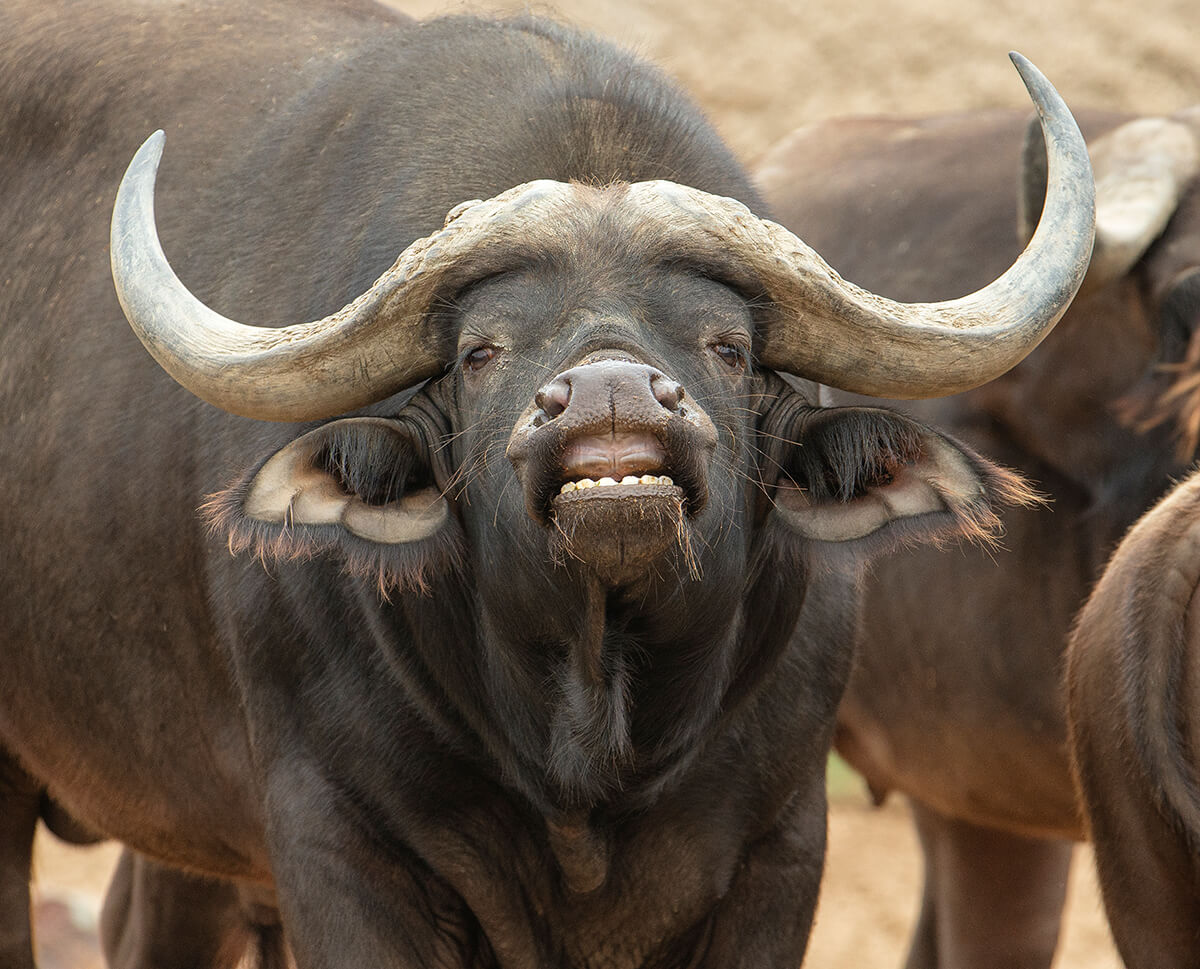
LIP SERVICE
In order to get a good sniff, ungulates (among other animals) exercise what is known as a flehmen response. They curl their upper lip, constricting their nostrils. Air inhaled through the mouth enters openings in the roof of the mouth, called the Jacobson’s organ. There, scent particles are drawn over a special patch of sensory cells, and finely detailed information is relayed to the brain.
Wildlife care specialists at the Safari Park keep this intrepid, protective nature in mind when working around the buffalo. “We have two herds now, a breeding group in the South Africa habitat and a bachelor herd in the East Africa habitat,” explains Lance Aubery, who notes behavioral differences between the two. “In the first, you almost always have young ones in the herd, so you have to watch out for a protective mom somewhere in the herd.”
And the other group? “The older guys are pretty easygoing,” Lance says. “There is a hierarchy in the group, so the younger males are always looking to make an impression. There are usually one or two younger males who will ‘bluff charge’ the Jeep when I drive by.”
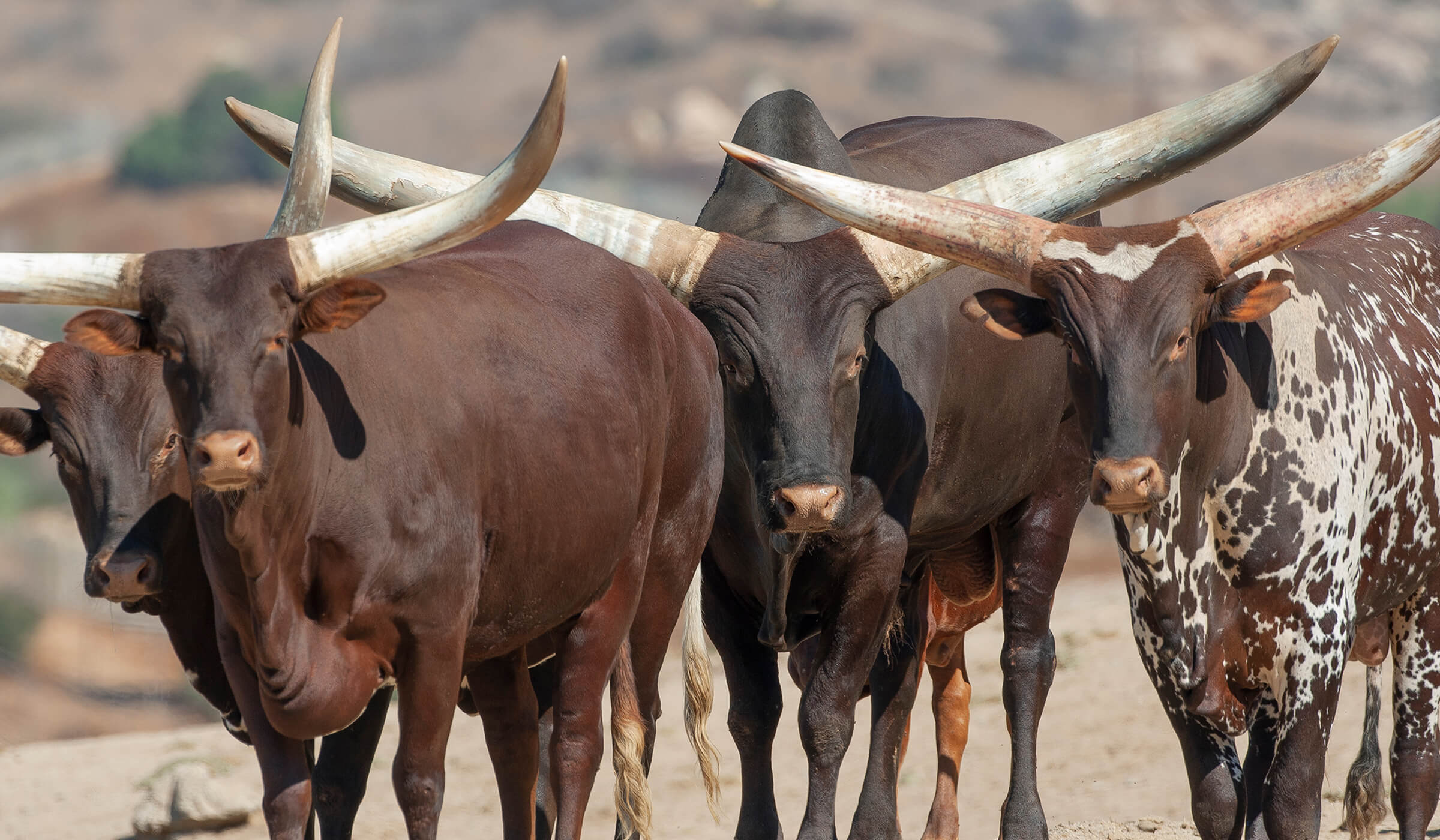
Ankole Cattle
Found in the open forests, grasslands, and meadows of Uganda, Tanzania, Burundi, Rwanda, and Eastern Africa, ankole cattle Bos tauraus are the headgear kings (and queens), sporting horns that can grow up to six feet, from tip to tip. The horns look heavy, but have a honeycomb structure inside. This not only makes them lighter, it’s believed they can help the cattle cool down as blood circulates. Their rust-colored, reddish coat can be solid or speckled. Males can weigh 1,600 pounds, with cows reaching 1,200 pounds. Ankole cattle are domestic cattle and are extremely herd oriented and protective of each other. Adults bed down in a circle facing outward, with calves in the center for safety from predators.
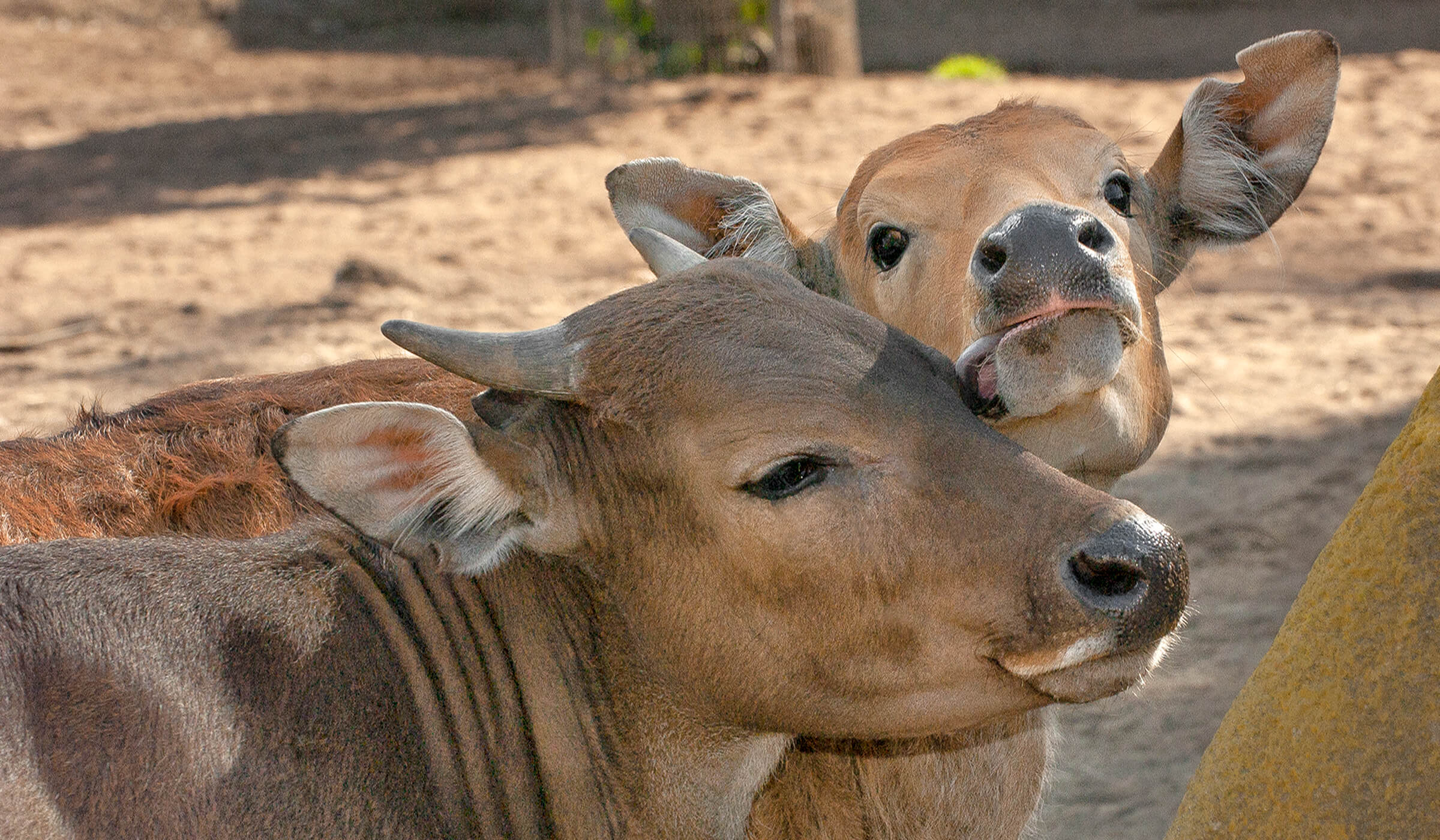
Banteng
Found in some of the same range countries as gaur—Mainland Southeast Asia—as well as Borneo and Java, the Endangered banteng Bos javanicus inhabit drier, more open areas than gaur. Telling the difference between male and female banteng is easy, since the sleek coat of a bull is blackish brown while that of a cow is reddish brown. Bulls measure about 4.5 feet at the shoulder and over 6 feet in length. Like Cape buffalo and gaur, the Javan banteng at the Safari Park are big, but they have a slightly more docile nature.
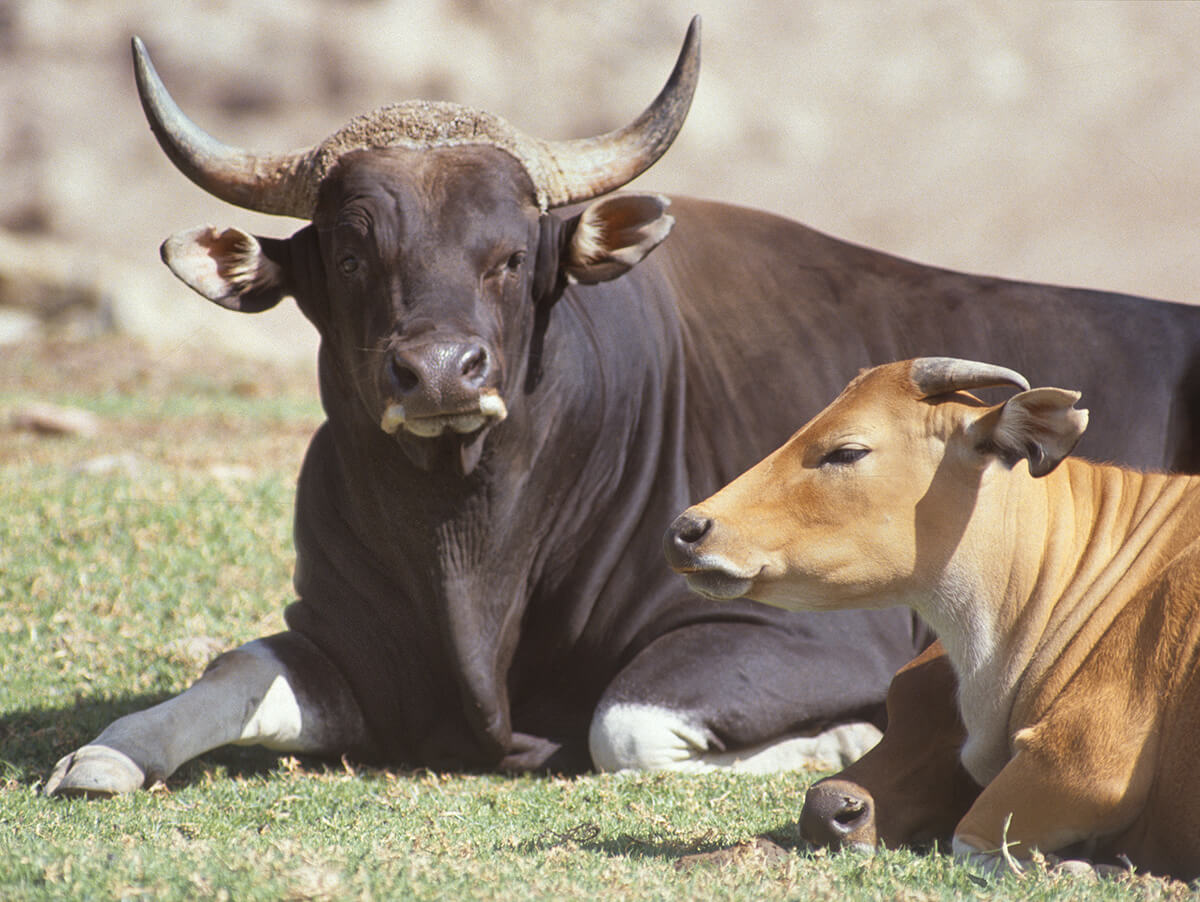
COLOR “COATED”
The coat of a male (or bull) bantang is a bluish black color, while females retain a reddish brown hue.
“Our banteng are pretty mellow with everything,” Lance says. “We’ve had great success working with them to move from one habitat area to another.” This conflict-avoidant behavior has been observed in the bantengs’ natural range, too. Field scientists note that small herds of 2 to 40 members are mostly active throughout the day and into the evening. However, in areas where they are harassed by humans, local herds shift into a more nocturnal activity pattern to avoid interactions that often don’t end well for wildlife.
From top to bottom, there are many things that set bovids apart. Some are big, some small, but they’re all interesting. And they help make these mammals critical to their environments and ecosystems. With our help, they can continue roaming their ranges—but only on the tips of two digits!

